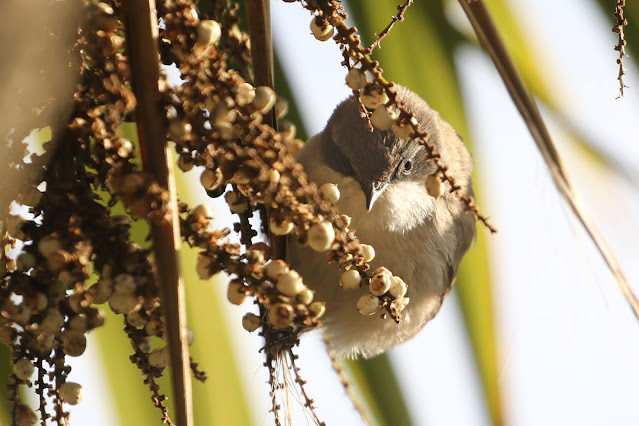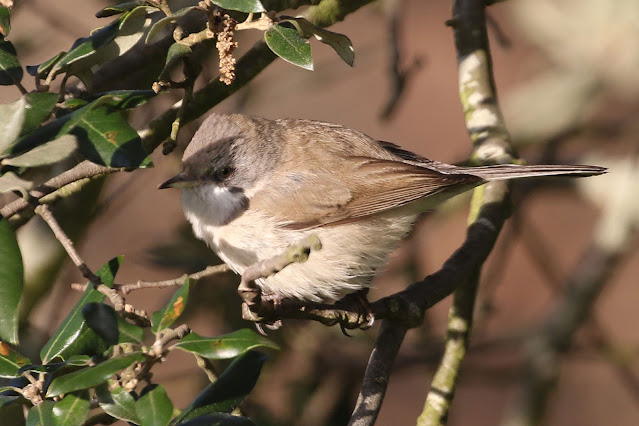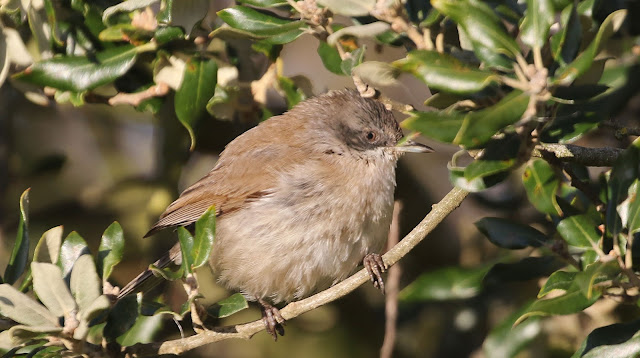On Friday 9th December Mark Francis reported a Lesser Whitethroat in bushes around the chalets at Hill Head. He found it in the afternoon and managed to get some photographs but with declining light the images were not the best, what was evident was that this was a Lesser Whitethroat and given the time of year was probably not of the nominate race Sylvia Curruca Curruca.
The following morning Ian and I joined Mark at the same sight to look if the whitethroat was still present, we stayed for about 30 minutes without any sighting but Mark remained and at 12:30 the bird was reported again. We arrived at the site at 13:45 and the Lesser Whitethroat was showing very well, moving between the bushes and a palm tree on either side of the entrance to the chalets.
The consensus at that time was that this was an "Eastern" Lesser Whitethroat, possibly of the sub-species S c Blythi. The bird was showing well and I was bale to get some good photographs in good light.
The bird was not behaving like any Lesser Whitethroat I have seen, this could be down to the weather and the need to search for food but it also appeared larger, long probably rather than larger overall. The upper parts were brown fading into a greyish brown nape and then grey crown.
The taxonomy of the Lesser Whitethroat group is famously
complex, with up to a dozen forms proposed. However some ornithologists
rationalise these into five forms:-
Curruca (‘Northern Lesser Whitethroat’) of northern Europe and
northern Asia. The form blythi found east of the Yenisei (‘Siberian
Lesser Whitethroat’) is not recognised as a valid taxon.
Halimodendri (‘Central Asian Lesser Whitethroat’ or ‘Steppe Lesser
Whitethroat’) of the steppes of Central Asia
Minula (‘Desert Lesser Whitethroat’) of the Central Asian deserts
Margelanica (‘Margelanic Lesser Whitethroat’) of western China
Althaea (‘Mountain Lesser Whitethroat’) of the Central Asian
mountains
Some for example, recognise blythi, whilst the likes of Svensson et al (1992) also recognise the form but include within it halimodendri.
Others however, identify three species groupings based on the existence of three separate song types. These are ‘Northern Lesser Whitethroat’ (incorporating curruca, blythi and halimodendri), the ‘Desert Lesser Whitethroat’ (incorporating minula and margelanica) and ‘Hume’s Lesser Whitethroat’ (althaea).
Confused, it is quite a mind field and difficult to determine what we had here in Hampshire. Mean while the bird itself had taken a liking to the berries on the Palm.


















No comments:
Post a Comment